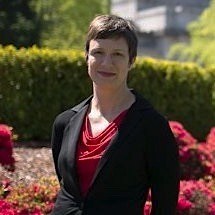Riding Into the Future: Equestrians, Cities, and Urban Ecology
By: Martha Wehling
July 16, 2018

The world’s population is expected to increase over the next 40 years, with the almost all of the growth concentrated in urban areas. In the United States, current urban areas are expected to expand into megacity clusters, which will contain a significant (1/3 – 1/2) portion of the country’s GDP.1 These megacity clusters will likely include some of the country’s equestrian-focused areas. To ensure that riding facilities and their supporting services remain within the proximity of the dense human population corridors, long-term land use planning is essential. To ensure the longevity of the sport and lifestyle, access to barns and competition venues must be efficient, sustainable, and resilient.2,3
Urban ecology is the study of the coevolution of humans in the urban ecosystem.4Although human-created, the urban ecosystem functions in many ways like a traditional, natural ecosystem. It supports a diverse population, can be a source and sink of population flows linked with other urban systems, has an apex predator (humans) who influence the diversity of the other species, and exists in hotspots worldwide, primarily but not exclusively in coastal zones.5,6 Urban areas mature through predictable successional stages and can collapse, grow or stagnate. Well-planned urban areas are healthier, support more diverse populations, and grow “up” rather than out.5
Due to decades of study by urban ecologists, the impacts of increasing population density lead to some predictable, and other not so obvious, impacts on access to equestrian facilities.7 With poor long-term planning, urban growth leads to sprawl and a decline in open space. Even where agricultural areas and open space are initially preserved, encroaching development and property values generally make the use of open space economically non-viable for equestrian facilities.

Also, different expectations between existing agricultural users and residential properties create conflict, such as nuisance litigation over traditional farming practices. Less obvious, however, will be limits on access to open space. To successfully increase in density and transition to megacity clusters, urban areas will have well-developed connectivity corridors that rely on mass transit and alternative transportation.8 In the future, if urban residents no longer have private cars, they may no longer have the ability to travel easily to the rural outskirts of a megacity where equestrian facilities are most likely to be located.1 Without large-scale infrastructure connecting urban corridors through the rural zones, it will no longer be a lifestyle option to own a car and access open areas.
In this context, maintaining access to equestrian facilities can be achieved by planning for mixed-use developments.9,10, 3 Mixed-use developments within megacities and on the outskirts of dense urban corridors will help cities maintain open space, which is well recognized as improving quality of life and preserve biodiversity.8,7, 11 However, for these communities to persist in the face of increased competition and pressure for land, equestrian property use must coevolve with rural areas now, not fight the urban/rural divide.12, 13

The study of urban ecology has identified and explored the drivers of successful and unsuccessful change when populations grow denser. Recognizing those drivers will allow cities to plan for future mixed-use growth. Similar to New York City’s exceptionally proactive planning to maintain open space within a dense urban area with geographic limitations, planning now, at the local level, will create models that can successfully be used by a variety of cities.2, 9, 14, 15 Some principles are relatively straightforward: long-term planning should avoid coastal zones that are likely to face severe challenges as a result of global warming.5 Mixed-use developments will need integration with public transport to provide access to the professional jobs in the urban centers.5,8 Mixed-use areas will also need a diversity of residential types, allowing a variety of incomes and growth within the community.
Fortunately for equestrians, there are several models and resources available, including Wellington, Florida; Lexington, Kentucky; Aiken, South Carolina; and Norco, California; all of which have equestrian-focused zoning regulations to balance the maintenance of facilities while encouraging residential growth and access to those facilities. If urban areas engage in long-term master planning now to include equestrian facilities, they will be more likely to maintain the complexity, connectedness, diffuseness, and diversity that leads to happy, resilient, and healthy urban populations.10

---

Martha Wehling is a graduate student in the MNR program who enjoys riding her off-the-track thoroughbred, Duke.
The Center for Leadership in Global Sustainability thanks the following photographers for sharing their work through the Creative Commons License: jaqian, diamond geezer, Martha Wehling?, and Ian.
References
- Khanna, Parag. How Megacities are Changing the Map of the World. TED. April 2016. Lecture. https://www.youtube.com/watch?v=U7y4GlmwPLQ
- Chavez, A., et al. 2018. Understanding, Implementing, and Tracking Urban Metabolism is Key to Urban Futures. Pages 68-91 in Elmqvist, T. (eds). The Urban Planet.
- Meerow, S., et al. 2016. Defining urban resilience: a review. Landscape and Urban Planning 147:38-49.
- McPherson, Simon. Urban Ecology: Introduction and Overview. Stockholm Resilience Centre TV (Links to an external site.). June 2013. Lecture. https://www.youtube.com/watch?v=klAGwjZEqVo
- Muggah, Robert. The Biggest Risks Facing Cities: And Some Solutions. TED. September 2017. Lecture. https://www.ted.com/talks/robert_muggah_the_biggest_risks_facing_cities_and_some_solutions
- Haase, D. Et al. 2018. Global Urbanization: Perspectives and Trends. Pages 19-44 in Elmqvist, T., et al. (eds). The Urban Planet.
- Norton, Edward. An Urbanizing Planet. Welcome Anthropocene. 2014. Lecture. https://vimeo.com/81597063
- Calthorpe, Peter. 7 Principles for Building Better Cities. TED. April 2017. https://www.ted.com/talks/peter_calthorpe_7_principles_for_building_better_cities (Links to an external site.)
- Angel, Solly, et al. Urban Expansion. Parts and Labour. 2013. https://vimeo.com/70509978
- McHale, M.R., et al. 2015. The New Global Urban Realm: Complex, Connected, Diffuse, and Diverse Socio-Ecological Systems. Sustainability 7:5211-5240.
- McDonnell, M. Et al. 2016. The ecological future of cities. Science 352(6288): 936-938.
- Wu, J. 2014. Urban ecology and sustainability: the state-of-the-art-science and future directions. Landscape & Urban Planning 125:209-221.
- Alberti, M., et al. 2018. Embracing Urban Complexity. Pages 45-67 in Elmqvist, T., et al. (eds.). The Urban Planet.
- Barber, Benjamin. Why Mayors Should Rule the World. TED. June 2013. https://www.ted.com/talks/benjamin_barber_why_mayors_should_rule_the_world?language=en
- ICLEI, http://www.iclei.org/agendas.html.


